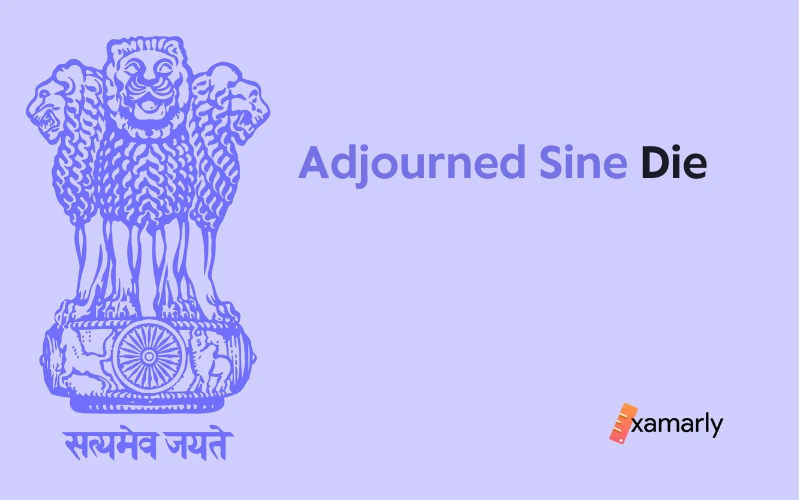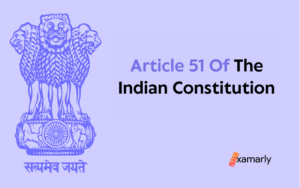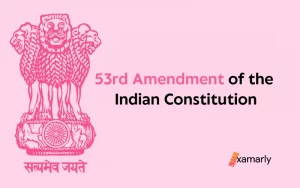Regarding an ongoing matter, the term “adjournment sine die” is a legal term that is used in both Parliament and courts. This phrase is composed of three words, two of them being Latin. Adjournment without day is what Adjournment Sine Die means in its literal sense.
When a meeting, session, or court case is to be adjourned without specifying the next precise day and time, it is said to be adjourned for an indefinite period.
Adjourned Sine Die, which is detailed in this piece, is part of the UPSC Indian Polity and Governance Syllabus.
What Is Adjournment Sine Die?
The phrase “adjournment sine die” refers to the situation in which the sitting of Parliament is terminated without a specific date being chosen for its reconvening or reassembly.
In the context of parliament, a session is a period between a House’s first sitting and the prorogation or recess, which is the period between the last sitting and the reassembly of the House in the next session.
An adjournment sine die means that the House will not sit for a specified amount of time. Instead, it will reassemble in the future.
The presiding officer of the House has the authority to adjourn a meeting or to end it without setting a specific date for resumption.
The officer has the authority to call a sitting of the House at any moment, even before the scheduled end time or date of the session.
Even after Parliament has been adjourned sine die, he can still summon a session whenever necessary.
Application of Adjournment Sine Die
Adjournment sine die means an indefinite suspension of a hearing. This adjournment method is a convenient way to avoid an impending trial or a lengthy legal battle.
However, the implication of an adjourned sine die may be misunderstood. The term “sine die” implies that there is no specific date to resume a case. It is important to understand how adjourned sine die works, so you know when to use it in a proceeding.
A court can also adjourn a case as Sine Die, which implies that the case will be put on hold until further notice. The following list of possible causes for sine die are:
- The incorrect procedure is followed.
- The proceedings cannot be completed in the near future.
Instances
During the Winter Session 2021, there continued to be a standstill between the government and the opposition concerning the Monsoon Session’s suspension of many MPs for their disruptive behavior in the Upper House of Parliament.
- The MPs who were suspended were staging frequent protests in front of the Gandhi Statue in the Parliament complex.
- Mallikarjun Kharge, the Opposition leader, supported the demonstration, along with other Members of Parliament.
- The Adjournment Sine Die was consequently implemented one day in advance of the appointed date.
- Adjournment Sine Die has a powerful influence on the functioning of Parliament and influences the efficiency of each Session in both Houses.
- The outrageous conduct of Parliamentarians or the wrong methods they implement during Parliamentary sittings is the repercussions of this situation.
Also Read: Powers And Functions Of Lok Sabha and Rajya Sabha
Termination Of Parliamentary Session
The Parliamentary Session in both Houses can only be ended by:
- Adjournment Sine Die
- Adjournment
- Proposition
- Dissolution
Adjournment
- An adjournment means that work at a session is halted for a set period of time. That could be hours, days, weeks, or months.
- The time of reassembly is given in this instance because an adjournment only ends a sitting, not the session.
- The power of adjournment lies in the hands of the House’s presiding officer.
To know more about the adjournment motion click on the linked text What Is Adjournment Motion?
Adjournment Sine Die
- Unlike adjournment, the session is halted indefinitely, i.e. the day for reassembly is not defined.
- The presiding officer of the House has the power of adjournment sine die i.e. meaning that they can suspend proceedings for an undefined length of time.
Prorogation
- Prorogation is the ending of a House session. This is directed by the President of India, as set forth in Article 85(2)(a) of the Constitution.
- The House session and sitting are both terminated upon prorogation.
- After the presiding officer has brought the House to a standstill by adjourning sine die, the President will often issue a notification for the prorogation of the session within a few days. Even if the House is in session, the President has the authority to prorogue it.
- Notices for introducing bills are the exception; all other pending notices lapse on prorogation. When this occurs, a new notice must be issued for the following session.
- A recess is a time period between a House’s prorogation and its reassembly.
Dissolution
- When a House of Parliament has been dissolved, its legislative term is over and a new House is created after the General Election.
- The Lok Sabha could be dissolved in one of two methods:
- Automatic dissolution occurs at the end of a five-year term or during a national emergency if the period is extended.
- The President, with the approval of the Council of Ministers, has the power to dissolve the Lok Sabha during its term. If there is a lack of confidence in the Council of Ministers and no political party can form a new government, then the Lok Sabha may be dissolved. Furthermore, if it is disbanded before its predetermined period ends, then its dissolution is irreversible.
- The Lok Sabha, however, is the only House that may be dissolved. The Rajya Sabha, on the other hand, is not liable for dissolution because it is a permanent House.
If these informative articles interest you, check out many more articles on tips and tricks related to UPSC preparation.
Summoning
The procedure of inviting all members of Parliament to a meeting is known as summoning. The President should summon each House of Parliament from time to time.
Six months is the longest period that can elapse between the two sessions of Parliament. To put it another way, Parliament should convene at least two times each year.
Conclusion
In this article, we discussed what adjournment sine die is. We also had a look at the different ways a session can be terminated or paused.
In short adjournment sine die and adjournment motion differs by the time period the session is terminated or paused. Adjournment terminates the session for a definite period of time while adjournment sine die terminates the session without providing any definite time period for a session’s termination.
In the interest of additional readings:
| Article 291 Of The Indian Constitution | Advisory Jurisdiction of Supreme Court |
| Right To Freedom Of Religion – A Fundamental Right | Writ Of Quo Warranto In India |
FAQs About Adjournment sine die
What Does Sine Die Represent For A Legislative Body?
From a legislative view, sine die signifies the end of a “day less” or “without a day” session. These adjournments are utilized to mark the end of a legislative or yearly house meeting.
What Distinguishes Adjournment From Adjournment Sine Die?
The term “adjournment of the Parliament sitting” refers to when a Parliamentary session ends and the next session’s timings are announced. However, it is called an Adjournment sine die when it is postponed for an uncertain time period.
What does Adjournment Sine Die signify in Parliament?
The House has adjourned indefinitely when Adjournment Sine Die is declared, meaning that no date for reconvening has been scheduled.
It indicates that the meeting will be postponed indefinitely. The presiding officer of the house has the authority of adjournment sine die.
What does it mean to be a “failed sine die”?
Upon adjournment, all legislation that hasn’t been enacted, vetoed, or failure is considered “Sine Die – Failed.” A bill that has been adjourned “without day” cannot be further processed, and therefore “Failed.”
What is the meaning of the sine die law?
The Latin phrase “without a day” is called the sine die law. When the time to reconvene is not set, the expression denotes an adjournment.






